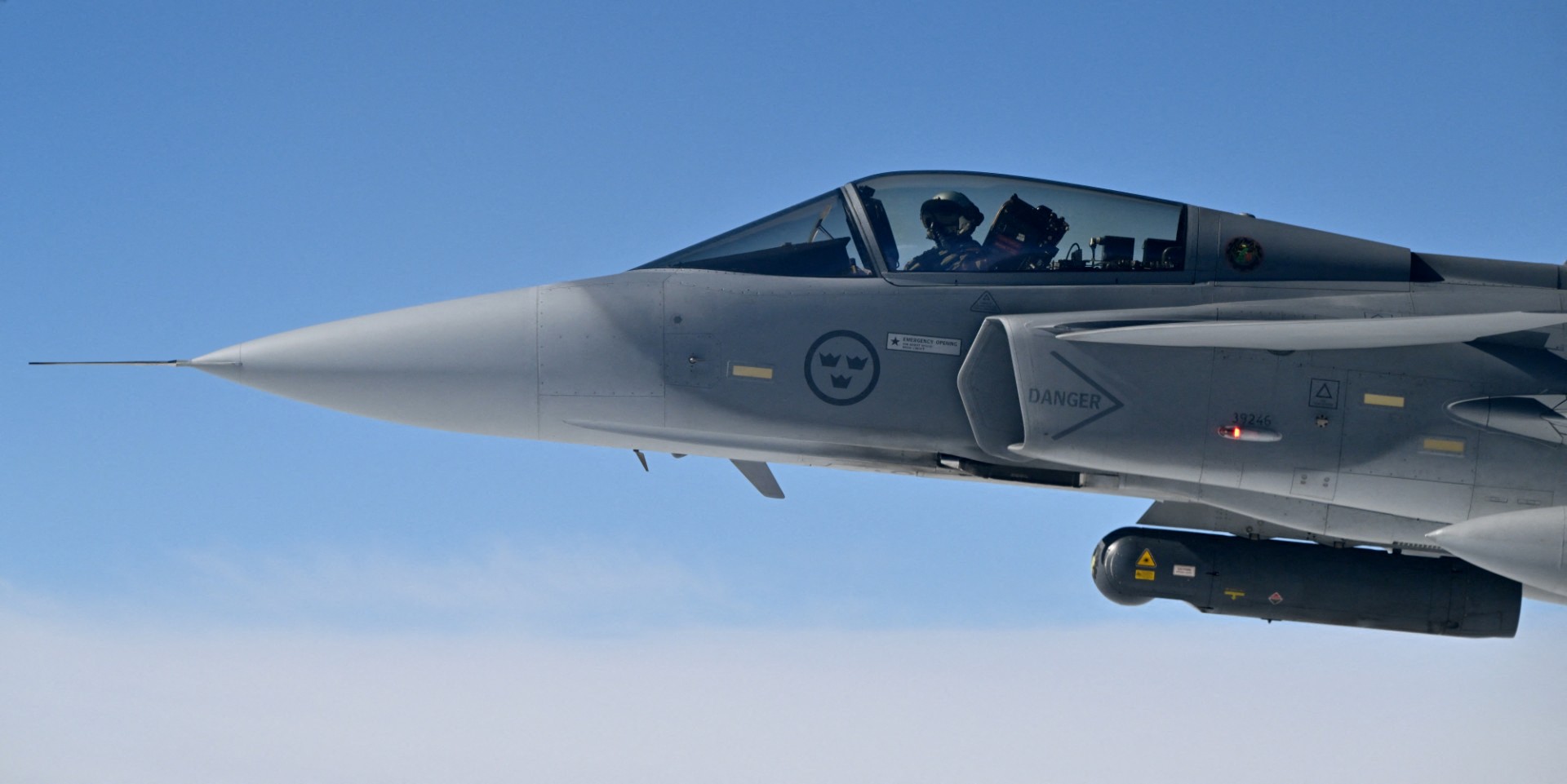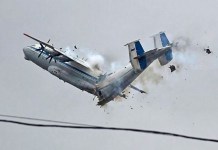After nearly four decades of operational service, the JAS 39 Gripen fighter jet has finally seen combat. But its first strike mission didn’t unfold over Europe or in NATO’s traditional theatres; instead, it took place along the Cambodia-Thailand border.
After five tense and violent days, Thailand and Cambodia have agreed to an “immediate and unconditional ceasefire” on July 28 — bringing a pause to what had become the deadliest border clashes between the two neighbours in over a decade.
The fighting, which erupted along the disputed frontier, claimed at least 33 lives and forced tens of thousands of civilians to flee their homes. What began as skirmishes quickly escalated into full-scale firefights, with artillery and gunfire rattling border villages for nearly a week.
While the ceasefire has offered some breathing space, the conflict has left behind a trail of destruction and a series of firsts. Chief among them – the operational combat debut of the SAAB Gripen.
Gripen Fires For The First Time
On July 26, as shelling intensified near the Phu Ma Kua ridge and the ancient Ta Muen Thom temple, the Royal Thai Air Force (RTAF) deployed its Gripen C/D fighters in a targeted strike against Cambodian artillery positions.
These precise and calculated Sorties marked the first time in history that the Swedish-built multirole aircraft was used in an active combat mission.
Until that moment, the Gripen had patrolled skies, not battled in them. Despite its nearly 30 years of service across air forces in Sweden, Thailand, South Africa, the Czech Republic, Hungary, and Brazil, the aircraft had never dropped weapons in a live battlefield scenario.
Its closest brush with combat came in 2011, during NATO’s Libya intervention, when Swedish Gripens flew only reconnaissance missions.
Sweden’s Foreign Ministry reportedly acknowledged the event after receiving reports of the strike, calling it the first confirmed use of the Gripen in real-world combat. A Swedish government spokesperson confirmed the issue would be subject to arms export review if future sales are considered, in line with the country’s regulations.
A Fighter Without a War — Until Now
The Gripen’s journey began in 1988 with its maiden flight. Designed by SAAB as a lightweight, cost-effective, and technologically advanced fourth-generation fighter, it entered service with Sweden’s air force in 1996.
Compact yet powerful, it was designed as a cost-effective, agile, and modern 4th-generation fighter. Later upgrades, including the Gripen C/D and the next-gen E/F variants, introduced cutting-edge avionics, extended range, and new weapons integration, all without compromising its signature adaptability.
By 2023, enhanced versions were rolling off the line, positioning the aircraft as a competitive export option in a market dominated by heavier, more expensive jets.
While Gripens have patrolled Baltic skies and supported NATO’s deterrence posture, including current deployments to Malbork Air Base in Poland, the aircraft had earned the unusual distinction of being the last Western 4th-generation fighter never to see combat. The Thai strikes finally changed that narrative.
Over the years, the Gripen evolved through its C/D models and now the E/F variant, bringing in improved radar, weapons integration, and extended range.
Unlike contemporaries such as the F-16 or Eurofighter Typhoon, the Gripen remained untested in war. Yet, it maintained a steady export track, bolstered by its lower operational cost and NATO interoperability.
Thailand’s decision to adopt the Gripen in 2011 was among its first outside Europe. RTAF currently operates 11 Gripen C/D fighters, following a pair of contracts signed in 2007 and 2008.
The first six aircraft arrived in early 2011, delivered straight to wing 7 at Surat Thani Air Base, forming the heart of Thailand’s tactical fighter squadron. A second batch followed soon after, completing the fleet by 2016. One jet was lost in a tragic crash during a 2017 air show, leaving 11 in active service today.
The recent combat mission, though small in scale, signals a shift in the aircraft’s reputation from a peacetime guardian to an active strike platform.

Thailand’s Tactical Edge
Thailand’s use of the Gripen in live combat didn’t just mark a milestone for the jet; it also highlighted the growing sophistication of the RTAF. With a fighter fleet including upgraded F-16s, F-5s, and Gripens, Thailand has steadily modernised its capabilities with multi-role platforms.
In June 2025, Bangkok revealed plans to acquire 12 next-generation Gripen E/F fighters, starting with an initial order of four. The deal, signed with Saab, is expected to begin with an initial order of four aircraft later this year.
If completed, this would not only enhance Thailand’s capabilities but also make it the first nation in Southeast Asia to fly the next-gen Gripen E in operational service.
That dominance became apparent during the border clashes. Cambodia, with no dedicated fighter jets in its inventory, had little ability to deter or respond to Thailand’s precision air strikes.
Its air force consists primarily of utility aircraft, VIP transport planes, and Cold War-era L-39C trainers. The disparity was clear, while Thailand launched guided strikes with supersonic jets, Cambodia’s air force remained grounded – literally.
But, SAAB carefully distances itself from operational decisions. “We are, of course, following the development and naturally hope for a peaceful solution to the conflict as soon as possible”, said SAAB spokesperson Mattias Radstrom while talking to Swedish media. “Questions about how Thailand uses its Gripen aircraft must be addressed to the Thai authorities,” he said.
Meanwhile, all eyes are now on Sweden’s Inspectorate for Strategic Products (ISP), the regulatory body responsible for overseeing the export of military grade equipment. With Thailand now entering a live combat environment using Swedish platforms, any future arms deals, including the planned Gripen E/F order, could come under renewed scrutiny.
Eyes On New Markets
The Gripen’s combat debut may also influence its future on the global market. SAAB is actively promoting the Gripen E/F internationally. Its current operators already include Sweden, Brazil, Thailand, Hungary, and the Czech Republic. Colombia is reportedly in advanced talks for the E/F variant, while Peru has also emerged as a potential customer of SAAB.
This combat use may strengthen SAAB’s case in procurement contests where operational credibility matters just as much as performance specs.
Back in Stockholm, the strike has not gone unnoticed. Sweden’s minister for Foreign Affairs, Maria Malmer Stenergard, acknowledged reports of Gifphen’s being used in the Thailand-Cambodian conflict. While she stopped short of direct comment on operational details, she noted that future export decisions will be guided by Sweden’s arms control regulations.
“If a future sale of more fighter jets becomes relevant, the issue must first be tested by the Inspectorate for Strategic Products (ISP) based on the situation prevailing at the time. A comprehensive assessment is made in each individual case,” she said.
Though SAAB remains at arm’s length from operational use, Swedish arms exports are regulated under strict ethical guidelines. Future sales, especially to countries involved in active conflict, are subject to review by IAP. The Thai combat use is likely to be a key consideration in any future licensing decisions.
SAAB has responded cautiously. “We are, of course, following the development and naturally hope for a peaceful solution to the conflict as soon as possible,” the company said in a statement.
Cambodia’s Empty Sky
While the Gripen marked its battlefield debut, the border conflict also cast a spotlight on Cambodia’s underdeveloped airpower.
Phnom Penh’s modest air fleet consists mostly of transport and training aircraft. It includes two Chinese-made Xian MA60s, five Tecnam P-92 Echo light aircraft for reconnaissance and pilot training, two Harbin Y-12 utility planes, and a single Airbus A320 used for BIP missions.
The Country’s jet age footprint is minimal, anchored by five L-39C Albatros trainers, relics from the Cold War era that are incapable of air-to-air combat. A handful of legacy aircraft, like Antonov An-24 RVs and BN2 Islander, now sit in storage.
The combat debut of the Gripen has shifted the regional perception of Thailand’s airpower from capable to cutting-edge. It marked a pivotal moment; not only was it the Gripen’s first-ever use in combat, but it also showcased Thailand’s growing proficiency in networked air operations.
Cambodia, lacking any air-to-air fighters or air defense systems of significance, has little ability to counter or deter these strikes. This overwhelming imbalance places Thailand in a position of strategic superiority, both in the skies and at the negotiating table.
As clashes persist along the border, the Royal Thai Air Force’s ability to launch fast, accurate, and surgical airstrikes may prove decisive. Beyond the battlefield, the operation has bolstered the Gripen’s reputation — reinforcing Thailand’s place among the most capable air forces in Southeast Asia, and possibly influencing future buyers watching from afar.
In this conflict, the skies belong to Thailand — and that dominance could shape not just the outcome on the ground, but the geopolitical dynamics of the region for years to come.
- Shubhangi Palve is a defense and aerospace journalist. Before joining the EurAsian Times, she worked for ET Prime. She has over 15 years of extensive experience in the media industry, spanning print, electronic, and online domains.
- Contact the author at shubhapalve (at) gmail.com




